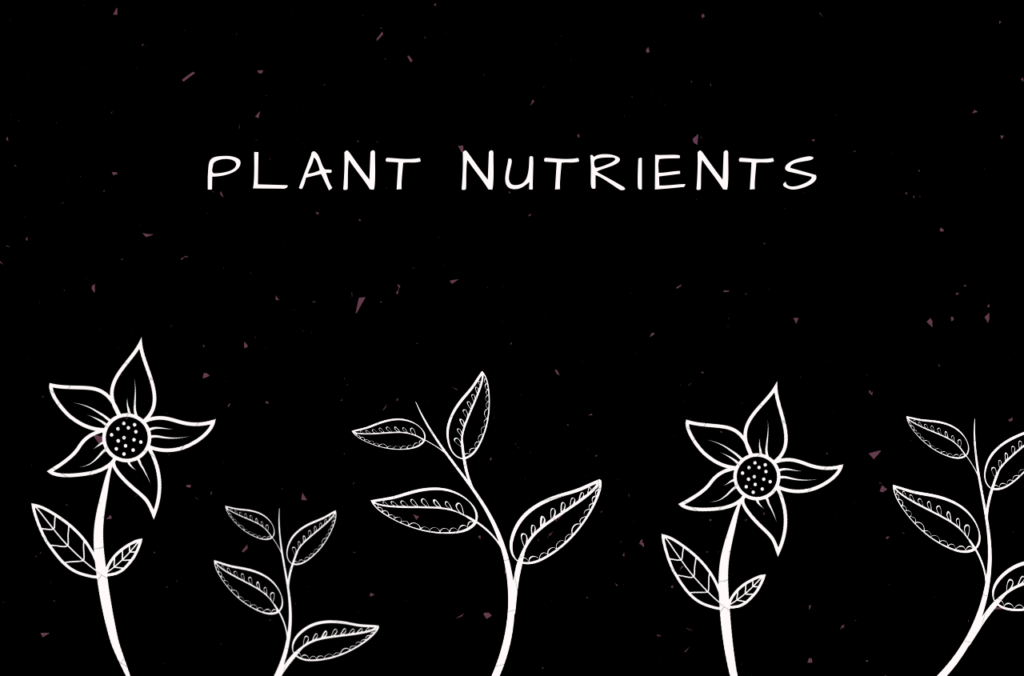In this article, you will learn about the essential plant nutrients for your plants.
Plant nutrients are chemical compounds necessary for plant growth, metabolism, and external supply. For plants to have a regular cycle, they need nutrients for the nourishment and healthy development of plants.
The plants absorb these nutrients from both the air and the soil. Nutrients absorbed from the air include; carbon in the form of carbon dioxide, oxygen, and hydrogen, while nutrients absorbed from the soil have; nitrogen, potassium, calcium, zinc, and many others.
Types of plant nutrients.
We classify plant nutrients into three categories.
Macronutrients.
These are nutrients supplied to the plants in large quantities. These are also called primary nutrients, including carbon, hydrogen, nitrogen, and oxygen.
Micronutrients.
The plants uptake these nutrients in relatively small quantities. These are also secondary nutrients, including calcium, magnesium, and sulfur.
Micro or trace nutrients.
The plants require these nutrients in tiny portions compared to the primary and secondary nutrients. They include boron, chlorine, copper, and iron.
Process of absorption of these plant nutrients.
The plants absorb these nutrients in the form of ions. These ions stay beneath the soil as salts and can be positively or negatively charged.
Unless these nutrients are available in the form of ions, they cannot be used by the plants even if they are available in high concentrated volumes.
The plants take in these nutrients through their roots except carbon absorbed through leaf pores.
The nutrient ions reach the root tip called the stele so that the nutrients can reach the conducting tissues (xylem and phloem).
The xylem transports water and mineral ions in the plant, and the phloem transports organic molecules.
They are also organisms in the soil that help these roots take up the nutrients.
These organisms include microbes and fungi.
The microbes undergo a mineralization process by breaking down organic compounds into inorganic compounds that the plant roots can easily absorb. In addition, the fungi provide soil to root contact hence increasing the size of the roots; therefore, the plants can easily take in phosphorous.
Fundamental ways through which plants take in nutrients through the soil.
Active transport.
Active transport refers to the absorption of nutrients by the roots through cells of ions or molecules against a concentration gradient facilitated by transport proteins.
Simple diffusion.
The nonpolar molecules move through a concentration gradient passing through the cell lipid bilayer membrane without transport proteins.
Facilitated diffusion.
There is a rapid movement of ions through a concentration gradient facilitated by transport proteins during facilitated diffusion.
How to determine plant nutrient levels available in the soil?
It is simple to know the different nutrients available in the soil. Therefore, soil tests can be carried out from the laboratory to justify the level of a given plant nutrient available in the soil.
Carry out soil tests to check the alkalinity or acidity of the soil, and calculate the soil PHs levels.
The plants also display symptoms that indicate issues with the nutrients. The common symptoms include yellow or dead leaves on the plants, dead tissues at the leaf tips, edges, and within the leaves, stunted growth of the plants.
Essential Plant Nutrients For Your Plants and their functions
Magnesium.
Since magnesium is a constituent of the chlorophyll molecule, it facilitates numerous enzyme reactions as an effective activator by supplying phosphorous compounds.
Potassium.
It facilitates the enzyme activity required for primary metabolism. It also regulates the turgor hence proper functioning of the stomata and cell volume growth.
Sulfur.
Sulfur consists of amino acids, vitamins helpful in chloroplast growth, nitrogen fixation by legumes, and converts nitrate into amino acids then into proteins.
Calcium.
Calcium helps develop cell walls, root development, cell elongation, and detoxification of hydrogen ions. Calcium also neutralizes organic acids and absorbs nitrogen.
Iron.
It helps in the electron of plant, photosynthesis, and it is also an enzyme cofactor.
Nitrogen.
It is the main component of the plant nutrient. It is an essential constituent of chlorophyll and its compounds dry matter of protoplasm, amino acids, and the building blocks of proteins.
Hydrogen.
It is from water and builds sugars within the plant, and hydrogen ions drive the electron transport chain in photosynthesis and respiration.
Sodium.
It facilitates the regeneration of phosphoenolpyruvate in CAM and C4 plants. It also regulates stomatal opening and closing.
Copper.
It is necessary for photosynthesis, cell walls, and grain production.
Manganese.
It is helpful in photosynthesis and the building of chloroplasts; its deficiency results in coloration disorders such as discolored spots on the foliage.
Boron.
It moves polar sugars through cell membranes by reducing their polarity and promotes flowering, fruiting, cell division, active salt absorption, and pollen germination.
Molybdenum.
It builds amino acids hence involvement in nitrogen metabolism, and its deficiency results in reduced productivity.
Nickel.
It activates urease, a nitrogen metabolism enzyme required to process urea, controls the accumulation of urea’s toxic levels, hence preventing necrotic lesions.
Zinc.
It plays a crucial role in DNA deficiency, and zinc deficiency and zinc deficiency leads to little leaf or stunted growth of leaves.
Silicon.
Il improves the health of plants, strengthens cell walls, enhances drought and frost resistance, and boosts the plant’s natural pest and disease-fighting systems.
Cobalt.
It fixes nitrogen in the soil with the help of nitrogen-fixing bacteria associated with legumes and other plants.
Chlorine.
It is absorbed in the form of chloride. It plays a role in photosynthesis, osmosis, and ionic balance.
Therefore, supply these plant nutrients in appropriate ratios and sufficient amounts.
By doing this, you achieve the purpose of plant nutrients.

